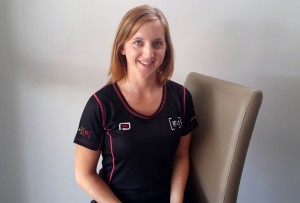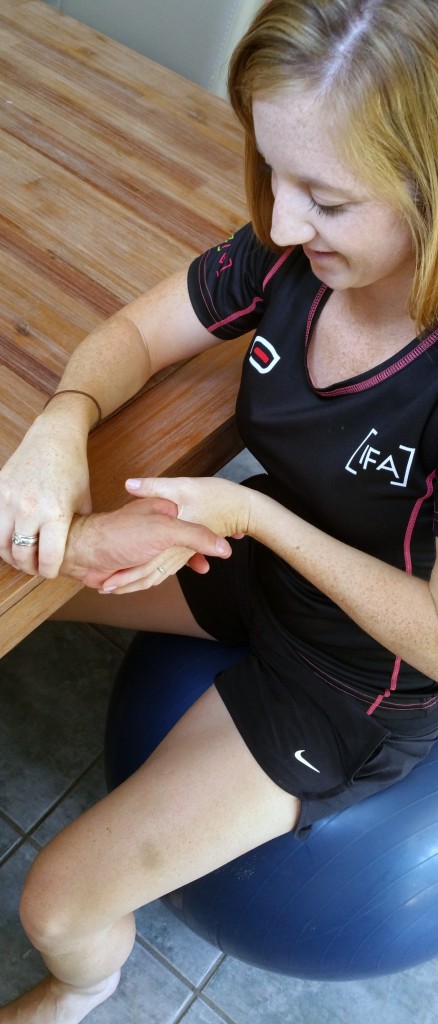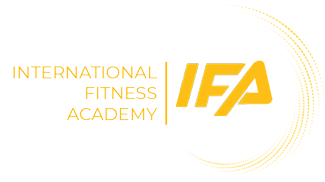
When you know your way around the human body, it’s amazing the injuries you pick up on. IFA sat with AFL sports therapist Melanie Clifford to watch a group of runners training along a popular path on the Sunshine Coast to discuss musculoskeletal conditions arising from sporting activity, and to understand how preventing sports injuries and dealing with the effect can result in better performance and overall health.
“You can tell a lot about a person’s injuries just by watching them run. Whether one leg kicks out, if their hips are in different positions, their posture … it’s amazing how much difference one injury can make to a person’s ability to perform to their full potential.”
Mel’s job as a Sports Therapist is to give advice to sport and exercise participants on how to train and compete safely, as well as treat injuries and assist with rehabilitation. Her aim is to prevent injuries and to help those who are injured to return to full fitness.
IFA: What are some of the biggest injury concerns you see as a Sport Therapist?
MEL: Calf and hamstring strains and tightness would be the most common in my field of work, but obviously there is an array of injuries that players can get, and depends a lot on which sport they play. I deal a lot with the lower limb.
IFA: What are some practical ways injuries can be avoided?
MEL: Ensuring that people perform a proper warm up, which includes going through the movements that they will be doing during their chosen sport or training session. A decent cool down and stretching is also vital in aiding the body’s recovery as well as re-hydration and good food to refuel the depleted energy stores.
IFA: What advice do you give athletes suffering from a chronic injury?
MEL: To seek advice from a health professional to assess their injury. I believe manual therapy to be very beneficial, and that could range from massage, dry needling, cupping, but also functional movements and corrective exercises as perhaps their injury is chronic because there is a motor control issue. Until the dysfunctional movement is addressed and you can retrain the body to move functionally with the correct timing of the right muscles the underlying injury will always remain.

IFA: Are there specific muscle groups that everybody should work to maintain? Why?
MEL: Everyone needs to work on their deep core muscles (not the six pack), as the trunk is the foundation of the body. The core needs to be strong and stable to support the spine and be able to provide that base for the peripheral movements to occur without injury and strain to the surrounding bigger muscles.
I also believe that the glutes need lots of work with activation and motor patterning, as most peoples are weak and therefore their lower back starts to take over, hence a lot of people have lower back pain commonly have poor glute firing, which is also common with a lot of people. This also correlates with my earlier statement of hamstring and calf tightness, as the whole posterior back chain is affected. Sometimes something as easy as rolling a golf ball on the sole of your foot, can help release tension in your lower back.
IFA: What about diet. In your career have you learned more about the benefits of a healthy diet?
MEL: Yes, I mean it is common sense these days really, to eat a healthy and balanced diet to fuel the body for performance. It’s also important to eat within the first 30 minutes after a workout, training or competition as this is the prime time of food to be converted into good proteins and energy to replenish the depleted stores. Eating completely clean can be hard for some people, but the best way is to prep some meals and always make sure you have a healthy snack with you, in case you get stuck somewhere and hungry and so you don’t give in to temptation of the unhealthy, cheap and easy options around us.
IFA: What type of athletes are you treating at the moment?
MEL: I am currently a soft tissue therapist for Richmond AFL club as well as the head trainer for a Womens’ football club. I have also worked with Cricket Victoria, Melbourne Victory, cyclists and stage show performers to name a few.
IFA: What is your method of treatment?
MEL: I have an array of treatment methods, the most common at Richmond for example is soft tissue based, and recovery massage for the players. I also use Dry Needling on other people as I find it is less painful and easier on my hands and targets the hard to get places. I also enjoy movement assessment and corrective exercises as this is where the magic can happen… if people comply.
IFA: For those looking to enter the fitness industry, what would be your advice?
MEL: Look into which area of the fitness industry you would like to get into, it has become fairly specific these days, and there is a wide range of health practitioner positions out there. I just took a leap to see if I would sink or swim, and I loved it. The human body is amazing and it’s great to be able to understand it and help people become better, pain free and achieve their goals etc. Also as every body is different (shape, size, occupation, movement patterns etc) there is never just the one right answer to help everyone. You have to play around with different techniques to suit that individual and that is what’s challenging and keeps it interesting.
March 2015 – Kate Davies


 BLOG SERIES
BLOG SERIES